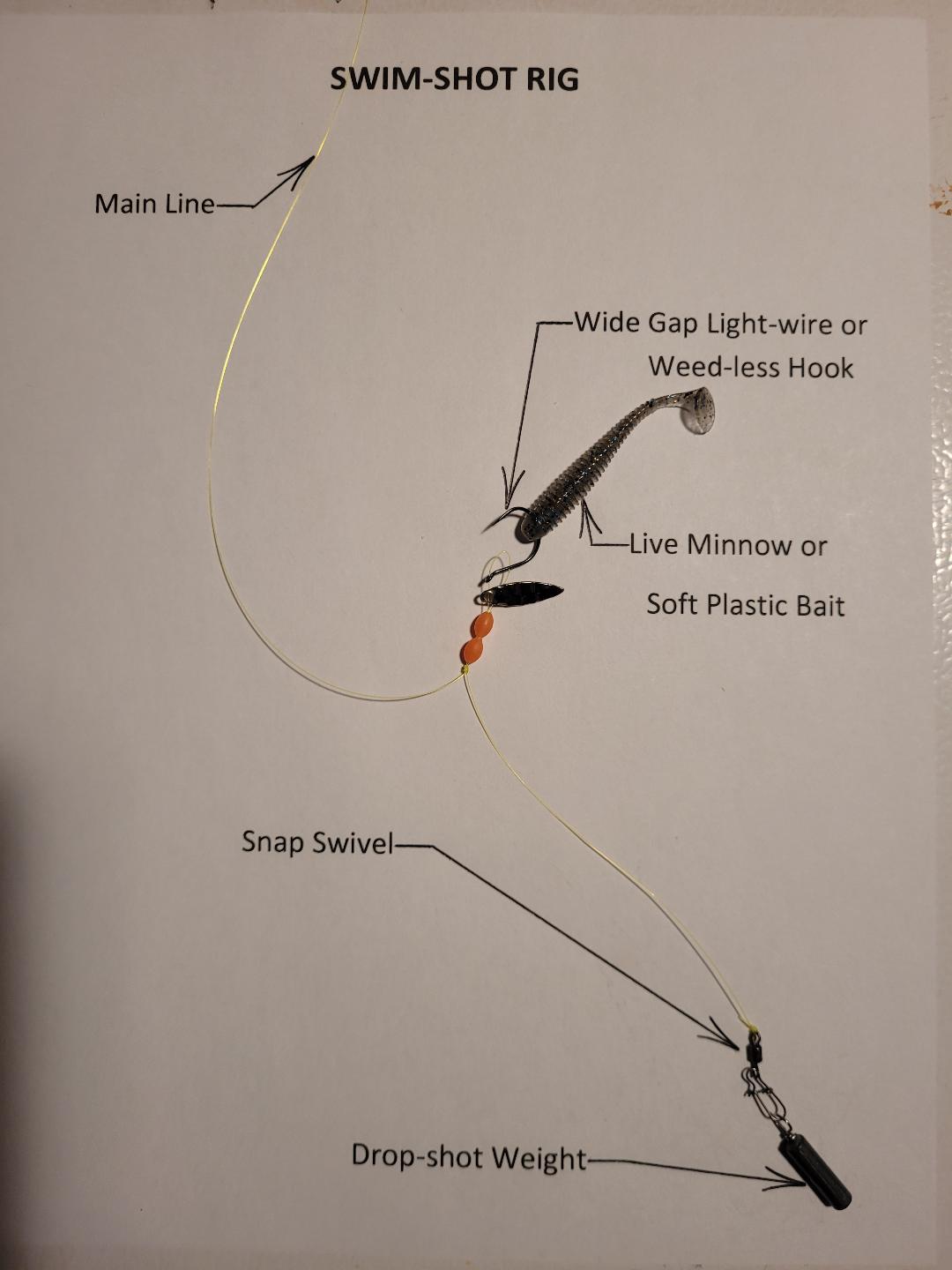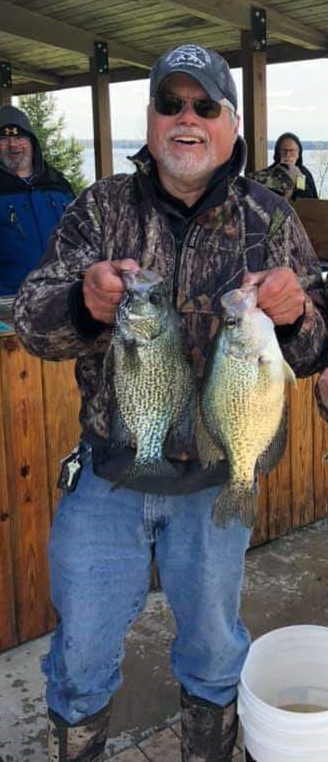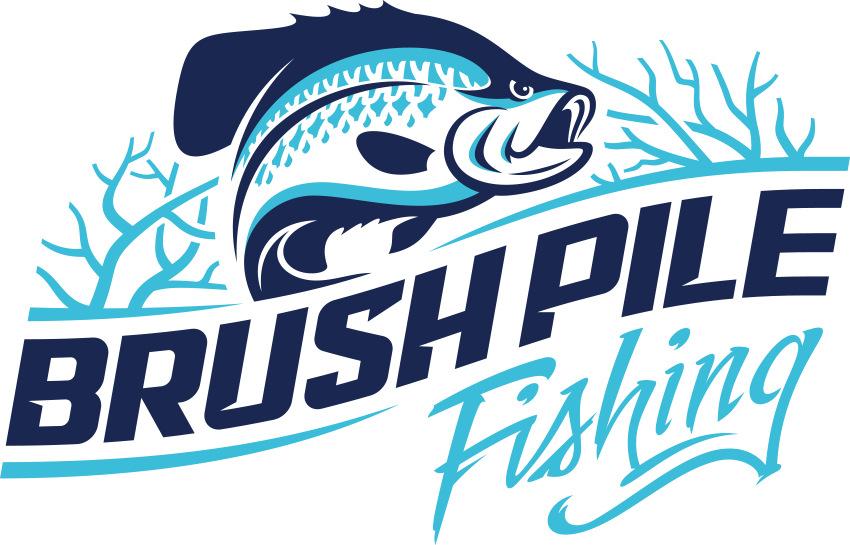Your cart is currently empty!
Casting a Drop-shot rig has become one of my favorite ways for catching Crappie. Officially dubbed as “Swim-Shotting” or “Drop Swimming”, it can be used for live-bait presentation as well as almost all types of soft plastics.

Modifying the standard Drop-shot rig to work for catching all types of Panfish is easily accomplished with a simple downsizing of the hook and weight. A few other additions that I make to the rig is to replace the traditional Palomar knot with a small loop knot (less than 1 inch) to enhance the bait’s swimming action as well as a snap swivel at the bottom just above the weight to eliminate line twist and make it possible to easily change weight sizes. Line size and style is optional. I prefer 6# to 10# Fluorocarbon for most situations. Braided line is undoubtedly much more sensitive, I just am not a fan of it. Cylinder-style Weight choices can be from 1/16th ounce to 1/4 ounce for the average Medium-action Fishing Rod. Heavier sizes up to 1 ounce should be reserved for the more traditional vertical Drop-shot methods.
The basic design of the rig makes it extremely weed-less since the line and weight usually make contact with any obstruction before the hook. I believe that the best length of line separating the hook from the weight should only be between 6” to 12” to avoid unneeded snags. An added feature of the rig allows the Swim-shot weight to act as a “plug-knocker” to pop the hook free of most snags as well.
I must emphasize here, the absolute importance of learning how to count-down cast. This is accomplished by casting out the bait and keeping a slow count until starting the retrieve. Altering the count until finding Crappie allows me to repeatedly return to the preferred depth on each successive cast. Sometimes leaving the bail on my reel open, allowing the bait to drop vertically will elicit more strikes. The alternate method of closing the bail once the bait hits the water, causing it to swing “pendulum-style” back to me, occasionally is a more productive approach. Subtle alterations like timing the bail flip can make major differences to my daily catch rate. The point that I make here is…. Paying attention to small details can be the difference to coming home with a boat-load or getting “skunked”.
Watching my line on the retrieve for any slight angle changes pays huge dividends as well. Waiting for that telltale “thump” usually causes me to miss out on numerous light strikes that I never actually felt. Using “Hi-Vis” line is a tremendous advantage to detecting those subtle line bumps or ticks that may get missed with clear/ invisible lines. I also suggest that holding the rod tip out to the side close to the water (3 o’clock or 9 o’clock position) and using a “side-sweep” hookset results in a lot less missed fish. This minor modification to the retrieve usually forces the hook to lodge in the hinge area on the side of their mouth and frequently requires a pair of pliers to remove.
Using a #4 or #2 light wire short-shank, wide-gap hook (Mosquito or Octopus style) gives me the ability to switch out bait sizes, styles or colors quickly. The most effective artificial baits for me have been small (3 inches or less) paddle-tail swimbaits nose hooked for maximum action. The traditional curly-tail grub also works well. I like the light wire hook types best because a live minnow will stay active longer and the hook will straighten out easier when it gets snagged. I also occasionally find it advantageous to employ a weed-guard style in the really nasty stuff. Changing retrieve speed and depth is accomplished simply by using larger or smaller weights. I generally carry a large assortment of sizes.
Most Crappie Anglers are aware of the importance of the “bling” to attract a few extra bites. For this reason I will occasionally add glow or rattle-beads and a small spinner-blade to get a little extra attention on those slow days. I highly recommend a small willow-leaf blade whenever the Sun pops out. Believe me, you won’t be disappointed!
The versatility of this system is also an additional selling point for adding it to your own “Fishing Arsenal”. Presentations like swimming, dragging, hopping or even completely stopping the retrieve can all be used effectively. I also like how quickly it adapts to almost any changing weather condition that may occur throughout a day of fishing. Simply swapping out baits or weights gets you right back into the game! This rig also has showed me that a fast cast over or beside any piece of cover will catch the most aggressive Crappies but still can draw strikes from the more timid biters with a stop & wait, lift & drop, more traditional Drop-shot technique.
Although almost any length of Fishing Rod will work, I prefer a longer version to make extended casts with a really light rig. My favorite has always been a 10’-6” Russ Bailey Signature Series that still gets the job done after over a decade of abuse. I have undoubtedly caught thousands of fish with it. After losing 2” from the tip in a terrible tail-gate incident, I discovered that the slightly stiffer action and larger replacement tip only improved my ability to use the heavier weights while vertical jigging in thick brush or trees. Casting accuracy is severely limited with the longer poles, but a tremendous advantage for playing larger fish on lighter test lines. I always have multiple lengths rigged in my boat at all times.
Another advantage I might mention here is that most fish have yet to see this approach and appear to be more likely to be fooled into striking. I believe that the exaggerated action and appearance looks much more natural when rigged on an un-weighted hook. I have a lot of confidence in catching Crappie in places other Anglers have previously fished for that reason.
Over the past 5 years or so, I have become of aware just how effective this rig can be. I am also finding that the Swim-shot rig catches almost anything else that swims as well. This modified, recently discovered version of the time tested Kentucky Rig works for me!
My 6’Rod set-up works perfectly whenever I shoot baits under docks. I should mention that I would have to rate my skills at Dock-shooting at about a 1 to 4 on a 10 scale. I have to admit most of my casts are more like a pitch. This method is definitely not suited for smaller targets, although someone with better skills may prove me wrong.
This technique excels whenever I get an opportunity to place my presentation between a boat and dock or metal lift. Skipping under docks is possible as well. I only attempt this maneuver when the dock is off the water a foot or more and is relatively clear of ropes or cross braces. It is critical that I mention that you seldom ever successfully recover a snagged rig. The weight attached to the bottom will inevitably wrap around anything and everything possible. Choose your targets wisely!
The advantage over shooting small jigs is obvious when considering the unlimited amount of time a drop- shot bait can stay in the strike zone. Pulling the line taught by lifting the rod tip causes the bait to rise and then fall when I give it a little slack. With a little practice even a Novice to this technique will be able to move the bait vertically without changing the position of the bottom weight.
Taking a turn or two on the reel moves the weight to a new location and the entire process can be repeated for long as a fish can stand it.
My favorite early season bait is the tiny hair/ feather jig or Steelhead fly. Add a little scent or Slab Bite/Nibble and let the fun begin. As the water temperature increases I will switch to small soft plastic twitch tail minnows. I believe in choosing to stay with smaller sized baits unless the lack of water clarity forces me to go bigger. When the bite gets tough, little tiny presentations worked slowly will usually still get me a few strikes.
Always keep in mind that the warmer the water temperature, the larger the strike zone becomes. It is always a good idea to change up bait sizes throughout the day and actually the entire season to offer a more appropriate offering.
As far as color choices goes; my favorite color is the one that I caught my last fish on. The fish will usually have a preference that can change with the water conditions in a matter of minutes or hours. Sometimes with each passing cloud on a predominately sunny day you will need to alter your color selection. The rule of thumb has always been “Dark colors on dark days and light colors on light days”. This may not always work but it has always been the foundation for my plan of attack. I absolutely am certain that having too many sizes, shapes, and colors is not ever possible to win this battle.
The last point I want to mention here is how important it is to pay close attention to the ever changing weather conditions. I personally believe that Weather has more impact on catching success or failure than any other factor. Passing Fronts will modify water clarity, levels, temperature, and sometimes even direction of flow. Using shade, on sunny days, as a determining factor for bait placement when pitching your offerings can also up your game tremendously! Let me finish by saying that I can’t believe that there aren’t already a lot more Crappie Anglers using the Swim-shot technique.
Article was written by guest author William Phillip

